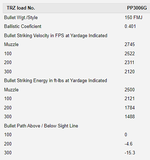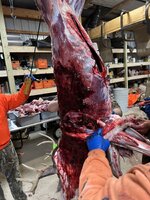Reburn
Mayhem Contributor
Hurt feelings...I don't have feelings.
In 1984 you don't think there were people killing antelope, deer, and elk and all other western game with the same gun that was in the truck for coyotes? Back then there were 3 kinds of bullets. A FMJ was just for paper, a hollow point was for prairie dogs, and the soft point was for everything else. Every rancher I know kept a 22-250 in every farm truck until the madness of covid killed their ability to buy a box of shells when they went to town for fuel or feed. I knew several kids in high school who's only gun was a 22-250 and they killed everything with it. The 55 grain soft point 0.224 caliber bullet has been killing everything from Alaska to Florida since before 1950. I know this makes you irrational, but it is irregardlessly true. The 55g 0.224" soft point has killed more game than the TMK has since it was designed. Is the 55g sp a better bullet on game than the TMK? That is an entirely different discussion over the fact that the 55g sp has killed more game than the TMK.
Jay
Here in Texas everyone I know started their kids on 22-250. Even now. soft points or 64 gr power points were always standard fare.


